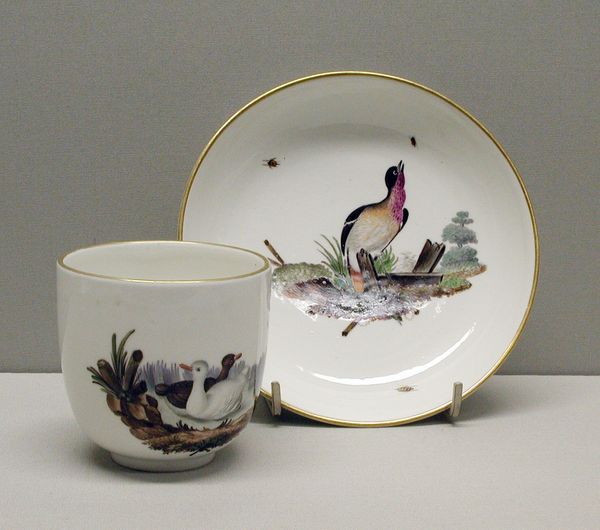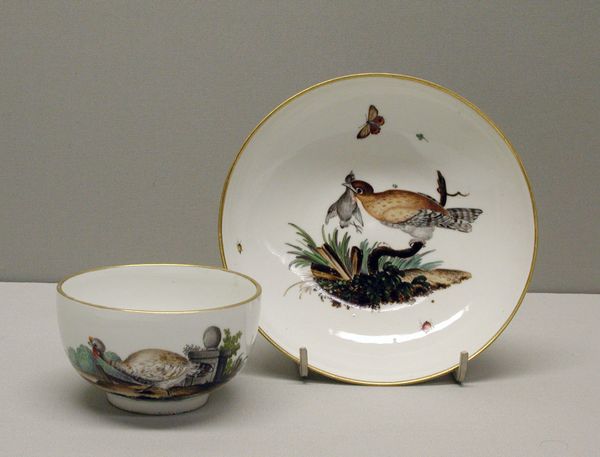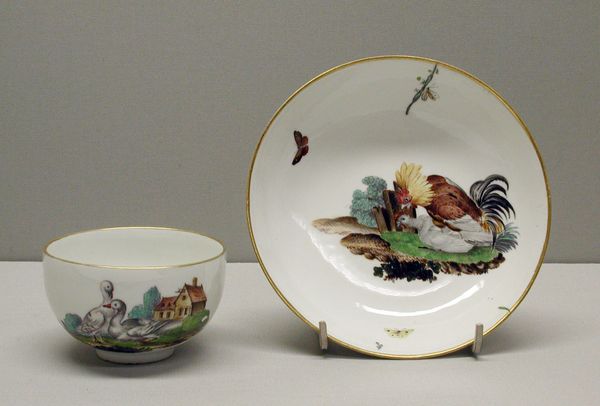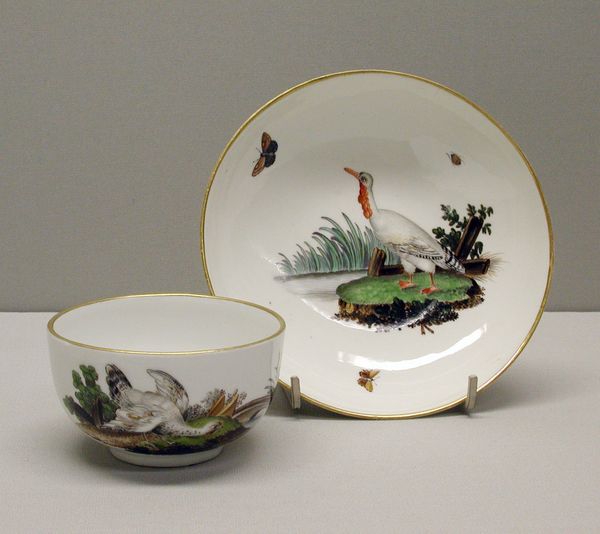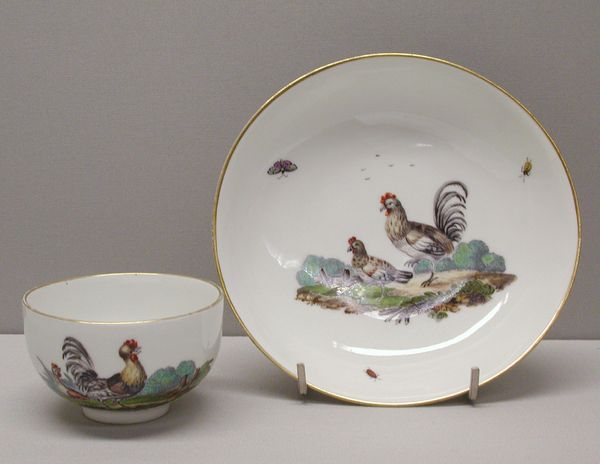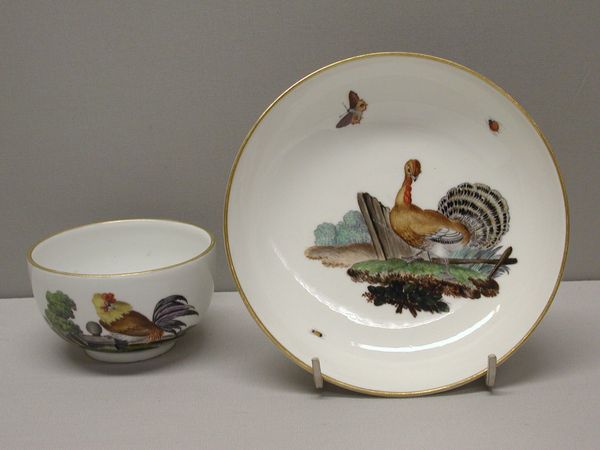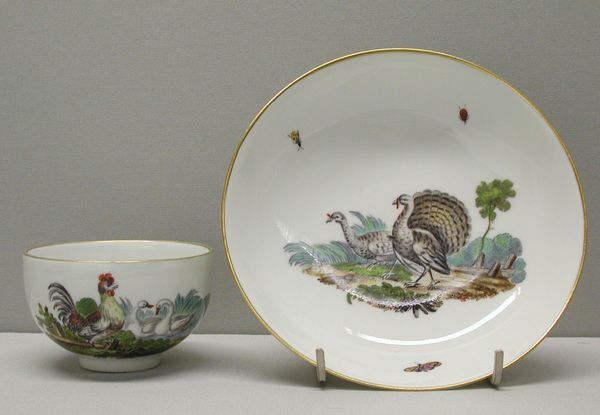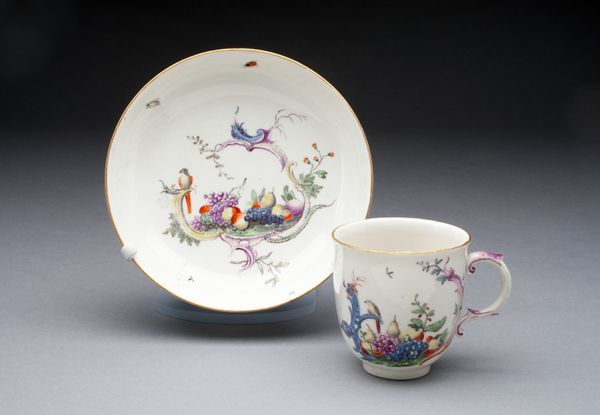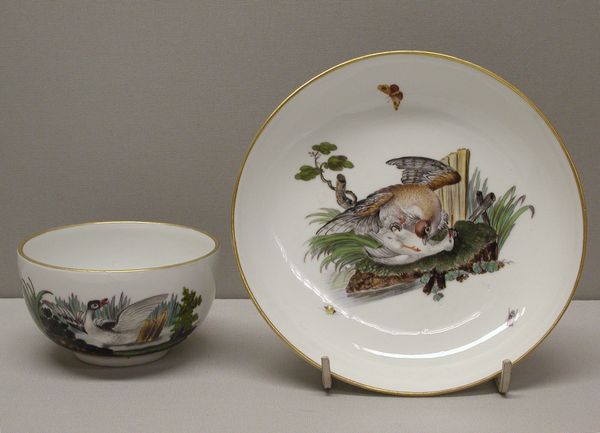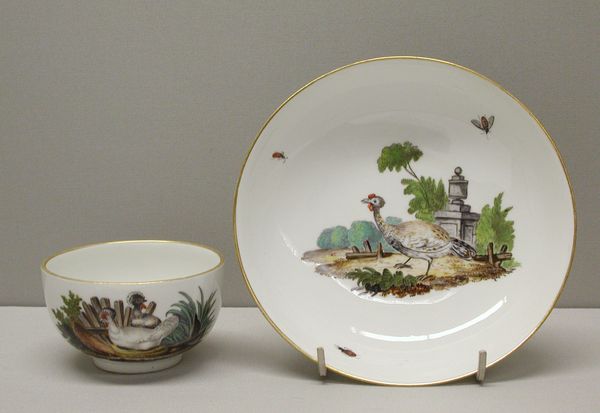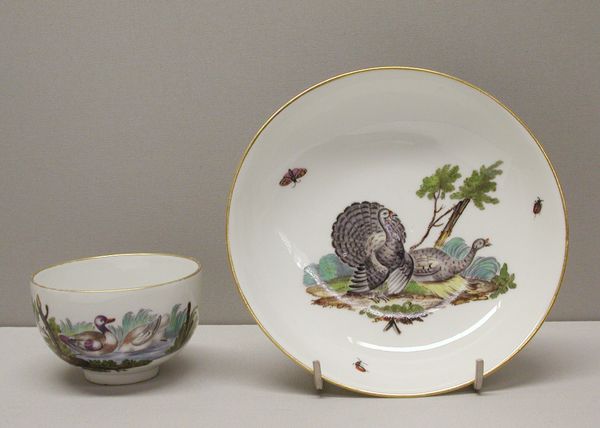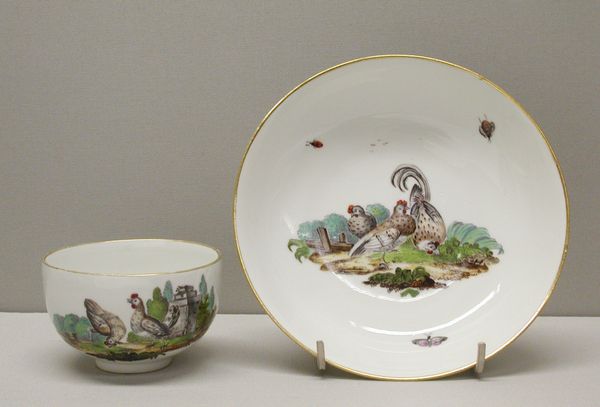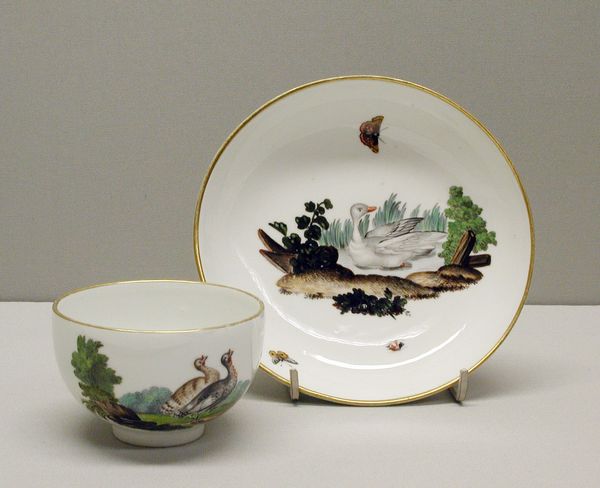
Dimensions: Diameter, saucer: 5 1/8 in. (13.1 cm) Overall, cup: 2 1/2 x 3 1/2 in. (6.4 x 8.9 cm)
Copyright: Public Domain
Editor: We're looking at a porcelain coffee cup and saucer made around 1770-1780 by the Höchst Manufactory. What immediately strikes me is how meticulously crafted these pieces are, clearly intended for someone of considerable wealth. How would you interpret the imagery and significance of this porcelain set? Curator: The materiality is crucial here. Porcelain itself was a luxury item, a testament to technological skill and access to global trade routes for the necessary raw materials. This wasn’t just a drinking vessel; it was a display of status achieved through manufacture and commerce. Editor: So the value isn't just artistic, but also lies in the resources and labor involved? Curator: Precisely. Look at the hand-painted birds; these reflect not just artistry but the skill of the painter as artisan. Porcelain manufactories of this period often employed a division of labor; how might that affect our understanding of the "artist"? And think about the role this set played in the rituals of coffee consumption in the 18th century, itself tied to global trade and colonial power structures. Editor: I hadn’t considered the cup and saucer as connected to global trade in such a direct way, I guess objects are more complicated than they seem at first glance. Curator: They certainly are! The rococo style itself reflects a certain decadence enabled by these structures. The gold trim, the idealized, somewhat exoticized birds—they all point to a culture of conspicuous consumption. How does this object challenge or reinforce traditional hierarchies between art and craft, production and consumption? Editor: It blurs that line significantly. This was a useful item, made precious through careful manufacturing, and the painting of images, almost making it fine art, while also highlighting the social inequities present during its time. I'll definitely be examining everyday objects differently going forward! Curator: Exactly, that close reading is crucial in understanding that it wasn't made in a vacuum. Considering an object’s complete production story is really important.
Comments
No comments
Be the first to comment and join the conversation on the ultimate creative platform.
